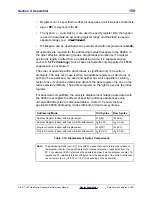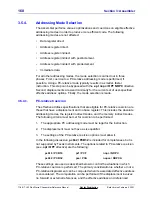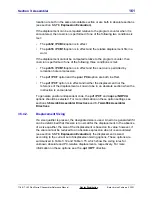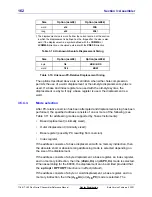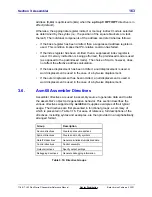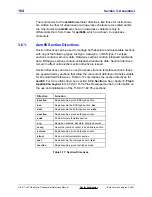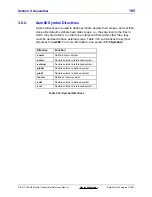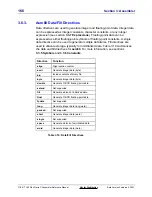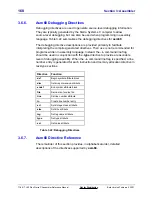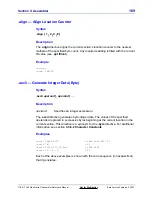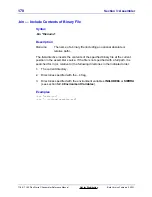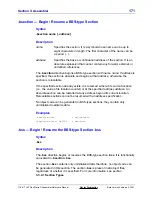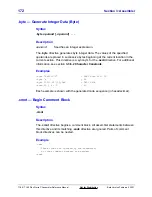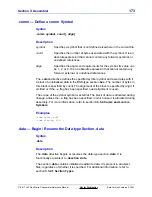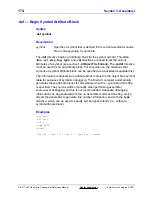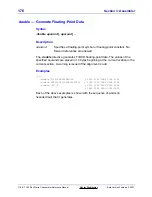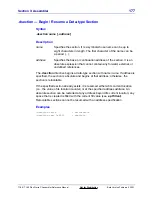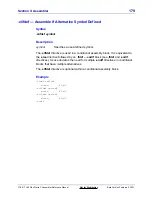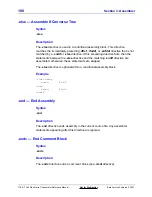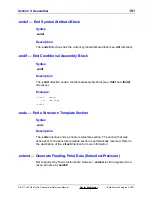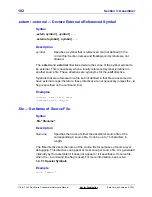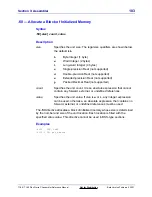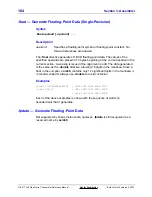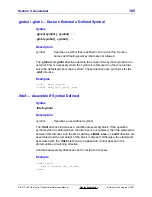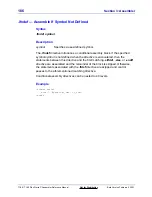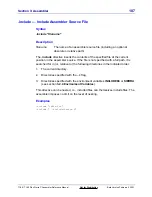
Section 3: Assembler
173
TI
-
89 / TI
-
92 Plus Sierra C Assembler Reference Manual
Not for Distribution
Beta Version February 2, 2001
.comm — Define a comm Symbol
Syntax
.comm
symbol, count [, align ]
Description
symbol
Specifies a symbol that is not defined elsewhere in the current file.
count
Specifies the number of bytes associated with the symbol. It is an
absolute
expression that cannot contain any forward, external, or
undefined references.
align
Specifies the alignment requirements for the symbol. Its value can
be 1, 2, or 4. It is an absolute expression that cannot contain any
forward, external, or undefined references.
The .comm directive defines the specified symbol
symbol and associates with it
a block of uninitialized data in the BSS-type section .bss. The number of bytes in
this block is specified by
count. The alignment of the block is specified by align; if
omitted or if the
-c
flag has been specified, quad alignment is used.
The scope of the symbol
symbol is external. The block of data is allocated during
linkage, unless the
-6
flag has been specified, in which case it is allocated during
assembly. For more information, refer to section 3.3.5.4 Comm and Lcomm
Symbols.
Examples
.comm table, 4096
.comm strings, 256, 2
.data — Begin / Resume the Data-type Section .data
Syntax
.data
Description
The .data directive begins or resumes the data-type section .data. It is
functionally equivalent to .dsection .data.
The section .data contains initialized read/write data. It is present in all object
files, regardless of whether it is specified. For additional information, refer to
section 3.3.4.1 Section Types.

